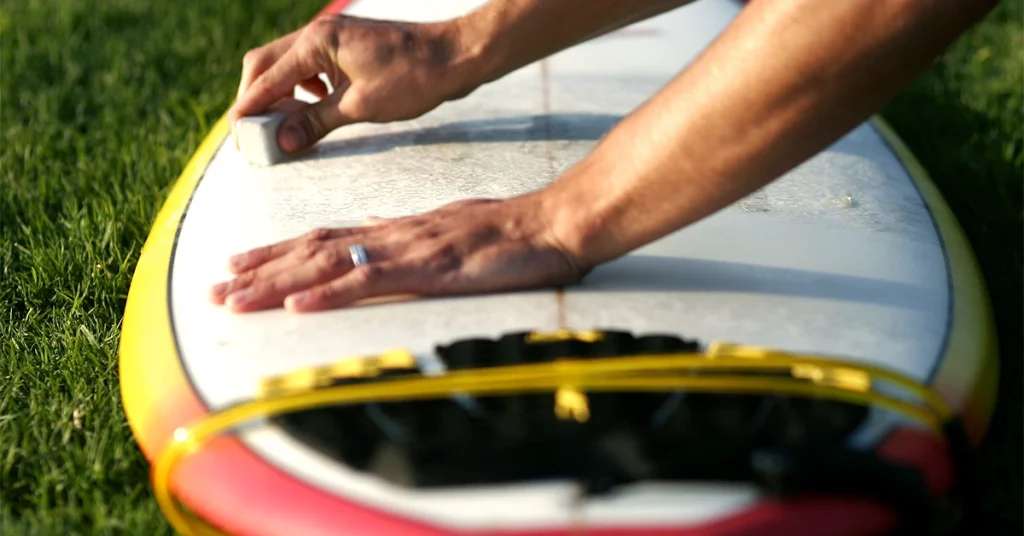Let’s discuss the benefits of waxing your surfboard before you go surfing. When you understand the benefits of waxing your surfboard, it will be no secret as to why surfers wax their surfboards before they paddle out.
When I finally got my first surfboard, I neglected all the advice about the importance of using surfboard wax. A bit of wax smothered on the top of the board could not make that much difference, right?
Besides, I am an experienced skateboarder. I was sure all I needed was upper-body strength and balance to keep my feet on the board.
“Why do surfers wax their boards, anyway?” I thought.
Well, I learned the answer to that question just about as soon as I paddled out.
When I finally popped up on my waxless board for the first time, it was a split second before my feet slipped out from under me, and I was back in the water. I did this countless times before I realized the problem. The deck of my surfboard was super slippery. Way too slippery for my feet to stick.
I vowed to never make the same kook surfing mistake and go without surfboard wax ever again.
To help prevent you from making the same mistake I did, keep reading.
Benefits of Waxing your Surfboard
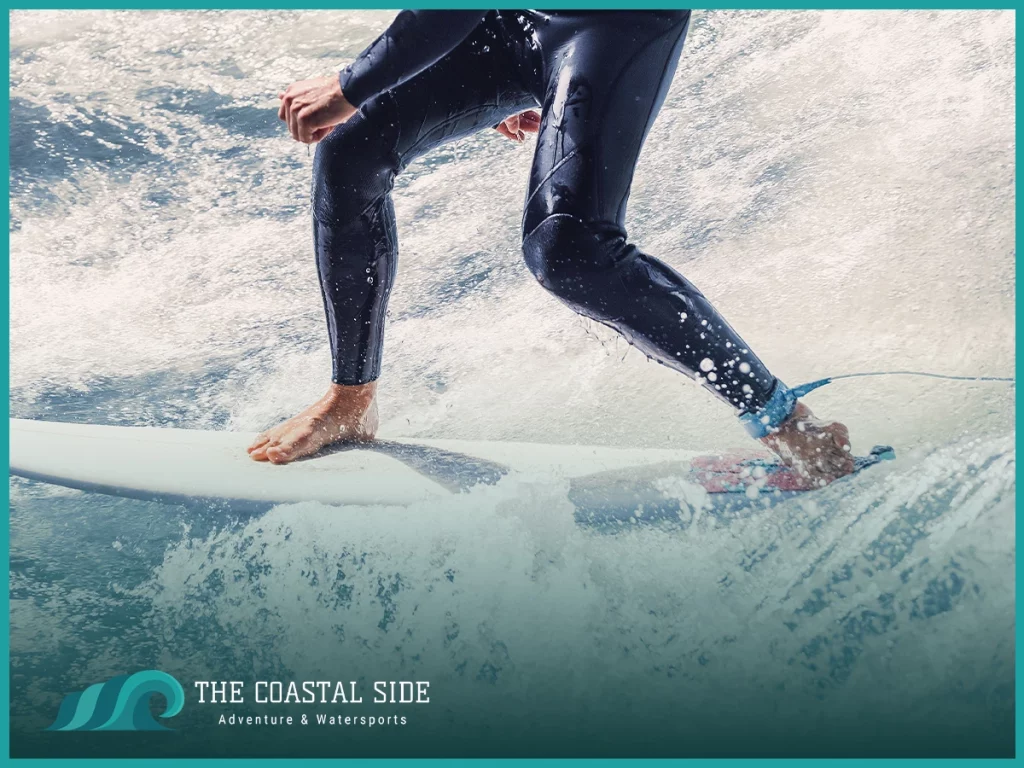
Let’s discuss all the good parts of waxing a surfboard.
Provides Grip
Waxing your surfboard deck is akin to putting grip tape on your skateboard. Wax greatly increases the friction between your feet and your surfboard. The waxy surface helps your feet get the best possible grip on the surfboard without the board flying out from under you. This is, without doubt, the number one reason to use surfboard wax. After all, last time I checked you can’t surf without a board beneath your feet.
Preserves your Surfboard
Believe it or not, keeping your surfboard properly waxed does more than just provide grip. Proper waxing also protects your surfboard from the elements and increases its longevity. Considering the high price value of surfboards, this is nothing to snuff your nose at. Wax protects surfboards from damage caused by:
- Sand
- Saltwater
- Sun exposure
Now you know how beneficial it is to wax your surfboard. It is also important to determine what type of wax is most appropriate for you and your surfboard.
What Type of Wax Should You Use?
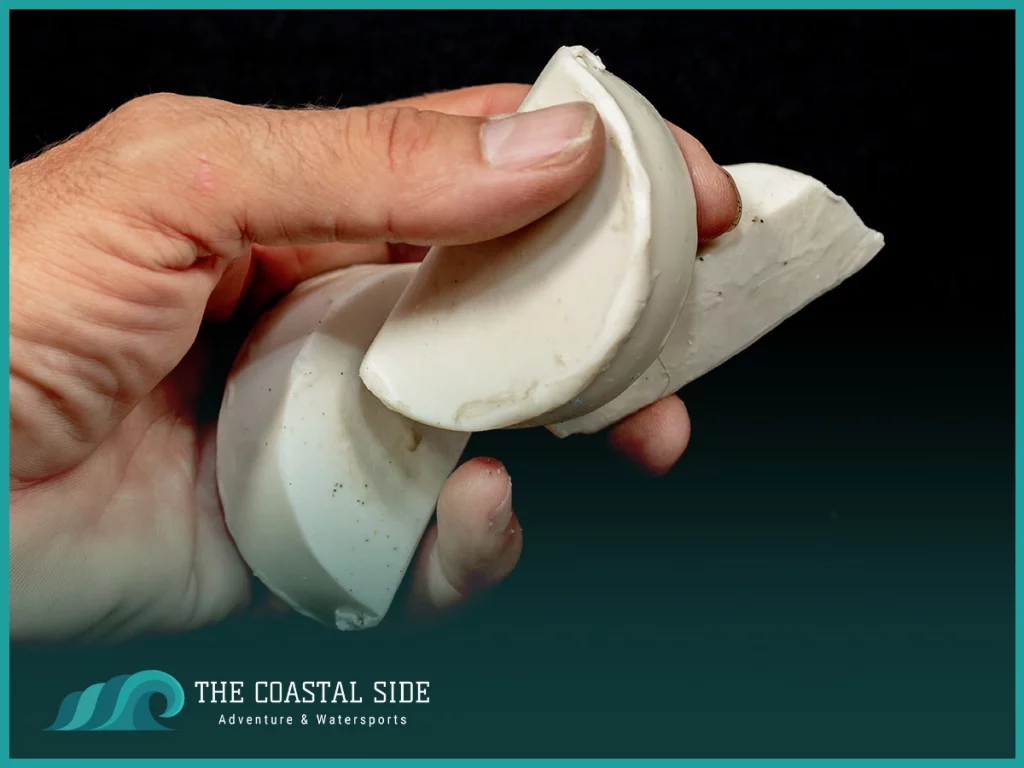
Many beginning surfers will use any kind of surfboard wax they can get their hands on. But the most important thing to know is that not all surf wax types are equal. There is a wide variety of surf wax designed for different purposes and conditions.
Grades of Wax
Surf wax comes in different grades of hardness ranging from light to heavy. A general rule of thumb to follow when choosing wax is: the warmer the water, the heavier the wax you will need. This is because warmer temperatures will melt wax more quickly.
Temperature
Wax used for surfing is also categorized by temperature. Different types of wax used for surfing are compatible with different water temperatures and climates. The wax temperature you choose determines how effective it will be at providing grip for your feetd.
There are generally four surf wax temperature categories. These include:
Cold
Cold surf wax is the softest grade of wax available. If you are surfing in water temperature that is 60 degrees or below, this is the type of wax you want.
Cool
Not as soft as cold surf wax, this grade of surf wax is best used in water temperatures between 58 and 68 degrees.
Warm
Warm surf wax is most effective in a water temperature range between 58 and 75 degrees. Anything above that and it will quickly melt.
Tropical
Tropical surf wax is the best wax to use when surfing in water temperatures 75 degrees and above. Higher temperatures require tropical wax so that it may withstand the heat without melting off.
Although wax used for surfing is made using a wide variety of ingredients depending on brand and type, the most common base ingredients used are paraffin and beeswax. Mr. Zogg’s Sex Wax and other popular brands usually come in a variety of fun scents such as coconut and bubblegum.
Traditional vs. Sticky
Surf wax is also categorized as “traditional” or “sticky”.
Traditional
Most wax used for surfing falls under the traditional category. Traditional wax is the best choice to use for a base coat.
Sticky
Sticky wax provides extra grip and is best used as a topcoat. Don’t use too much or otherwise you might get your feet stuck to the board and risk injury.
Types of Application
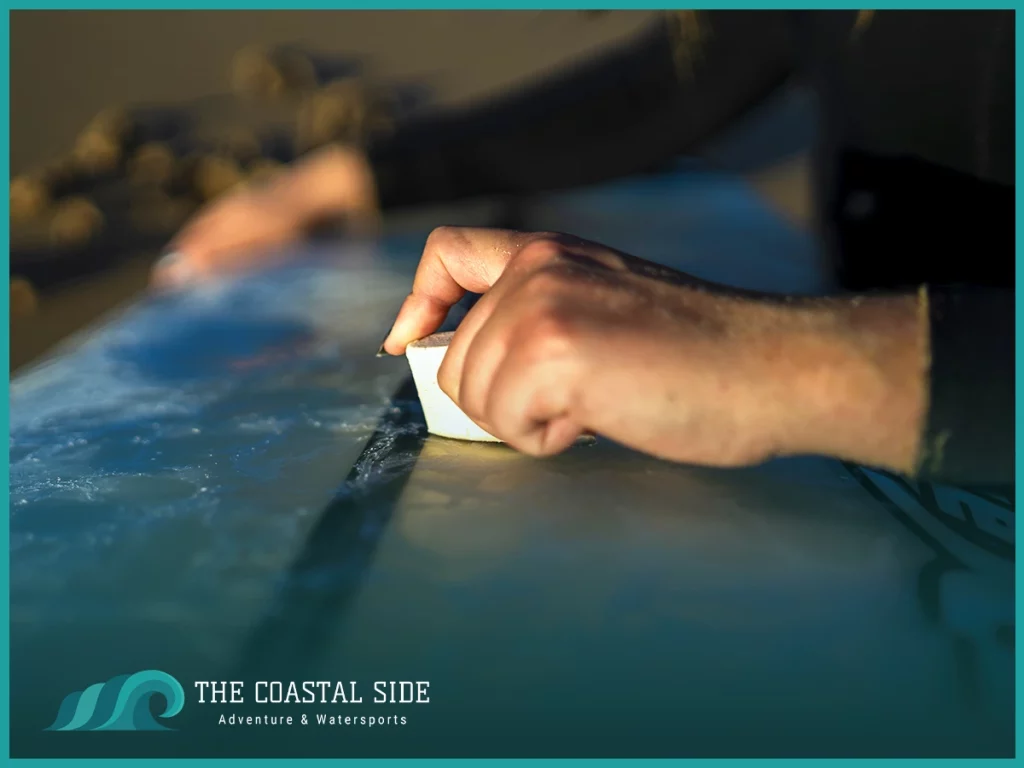
Typically, you apply two separate coats of wax to the deck of a surfboard.
Base coat
The base coat is the first coat of wax and usually consists of a harder type of wax made for warmer temperatures. The base coat’s purpose is to hold the next layer, also known as the topcoat wax.
Topcoat
Apply the top coat over the base coat. Use a softer type of wax for this coat.
How to Use Surf Wax
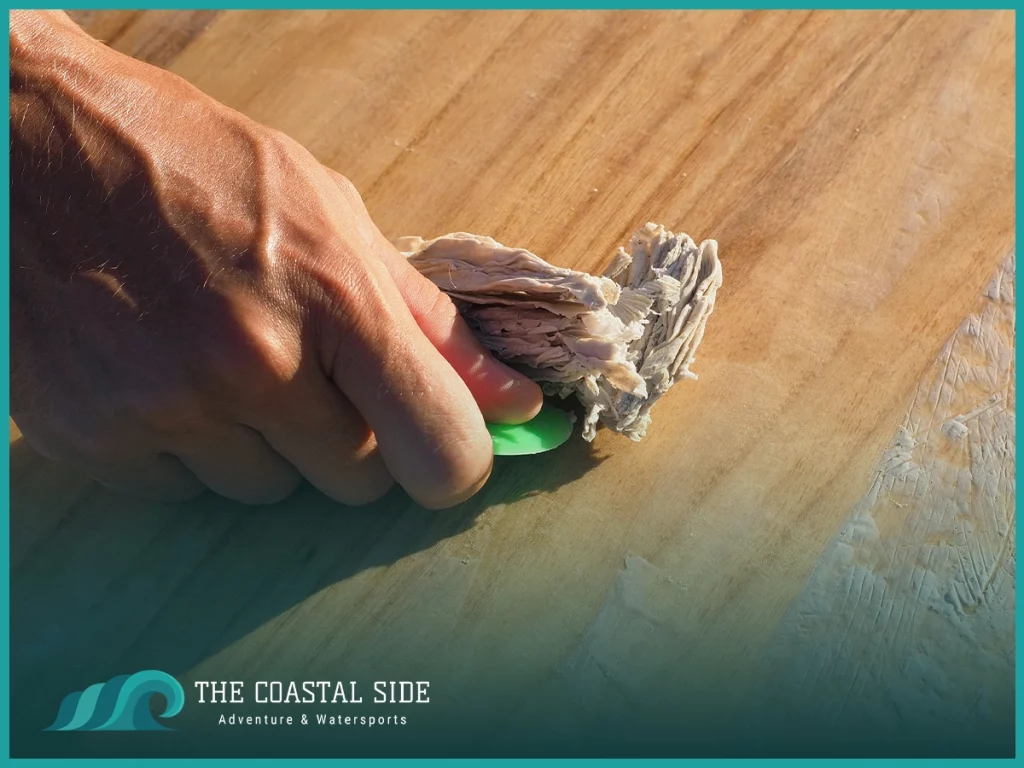
Applying wax on your surfboard for the first time can be intimidating. But the process is pretty simple. Follow these suggestions and you’ll have your board waxed and ready to ride in no time.
Step 1
Clean the surface of your surfboard. Make sure it is clear of any dirt, debris, or old wax. You can use a surf comb, a wax comb, a plastic scraper or a Surf Pickle to scrape away all the old wax. Wax combs can work to remove surfing wax. Wiping the deck of the surfboard with a soft cloth and warm water is usually enough to get the job done. What you want is a clean board.
Step 2
Apply the first layer of wax (also known as the base coat) on the deck of your surfboard using a rubbing motion. Cover the general area where you will plant your feet when popping up onto the surfboard. I recommend using tropical wax because the hard wax help the topcoat stick better.
Step 3
Rub the wax on the surface of the board in the area where you will plant your feet.
Step 4
Apply another coat of soft wax until the surface feels bumpy enough to give your feet the right amount of grip.
Note: You can experiment using different application techniques such as circular motion, straight lines, a crosshatch pattern, and small circles. However, most surfers tend to just go for it!
Final Thoughts
So, we have answered the question, “Why do surfers wax their boards?” Without wax, the ability to stand up on a surfboard and ride a wave would be near impossible. It provides the grip and traction needed to keep your feet on the board.
Follow the suggestions in this article and keep your surfboard properly waxed. Not only will you help keep your board beneath your feet, but it will also help protect your surfboard from the elements so that you can shred the tastiest waves of your most radical summer dreams. Happy surfing!

